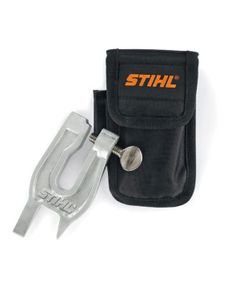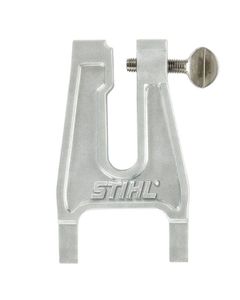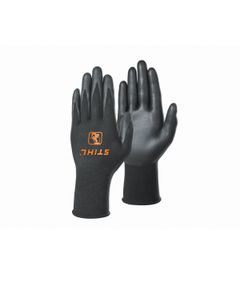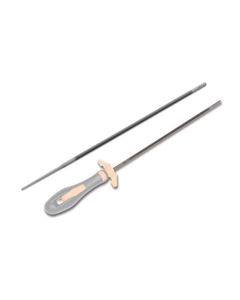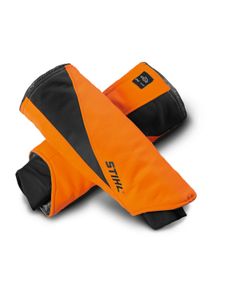Chainsaw Sharpening Guide From Experts | STIHL SHOP
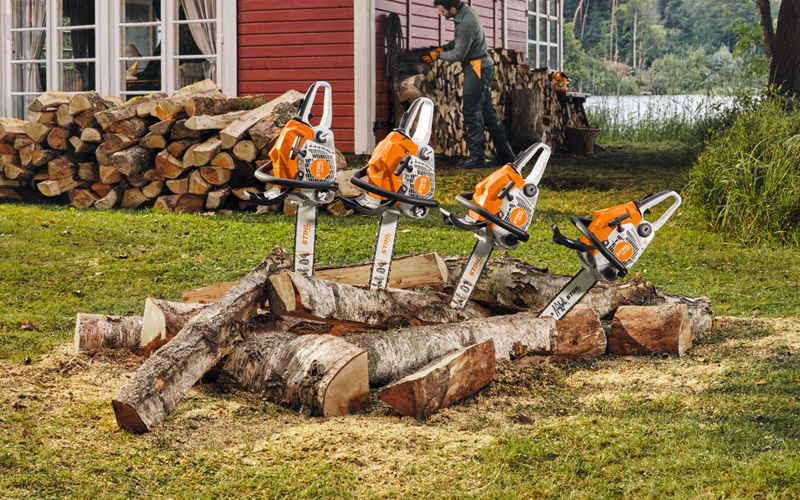
CHAINSAW SHARPENING GUIDE
This Chainsaw Sharpening Guide will help you better understand when to start sharpening your chainsaw, how to sharpen a chain using a file and provide tips directly from our Experts.
HOW DO I KNOW IF MY CHAINSAW IS BLUNT?
When a chainsaw becomes blunt there are often very noticeable performance changes. You may require more pressure to cut wood or fine saw dusk is produced rather than coarse chips.
Even the best Saw Chains become blunt over time, and when they do your Chainsaw becomes less effective and suffers from increased wear. This is why it is so important to ensure time is dedicated to ongoing maintenance. If you notice the following signs when working with your Saw, you should sharpen or possibly even replace your Saw Chain:
-
Your Chainsaw no longer pulls itself into the wood. Instead, you will notice yourself having to apply pressure to get a cut.
-
Fine sawdust is produced rather than coarse chips when cutting vertically through wood.
-
Noticeable smoke emits from the Saw, despite sufficient lubrication and tensioning.
-
The cut is skewed. This generally indicates that you need to sharpen the teeth on one side, or that they are not all an even length.
-
Your Chainsaw rattles or even bounces when in use, making it difficult to use with precision
HOW TO SHARPEN A CHAINSAW CHAIN
We are asked so often on how to sharpen a chainsaw that we have created a dedicated video guide.. Become an expert at sharpening your Chainsaw Chain with Phil Needham, a STIHL New Zealand Product Manager. Phil introduces two methods to keep your Chainsaw Chain performing perfectly in the below YouTube Video.
SELECTING THE RIGHT FILE SIZE
As there are many different sizes of chain, it is important to use the right sized file that corresponds with your chain.
This can be done by establishing the pitch of your chain, which can be found in the form of a small number marked on the depth gauges. This small number indicates which file diameter will fit the chain when using the STIHL conversion table as seen in the image below.
STIHL CONVERSION TABLE

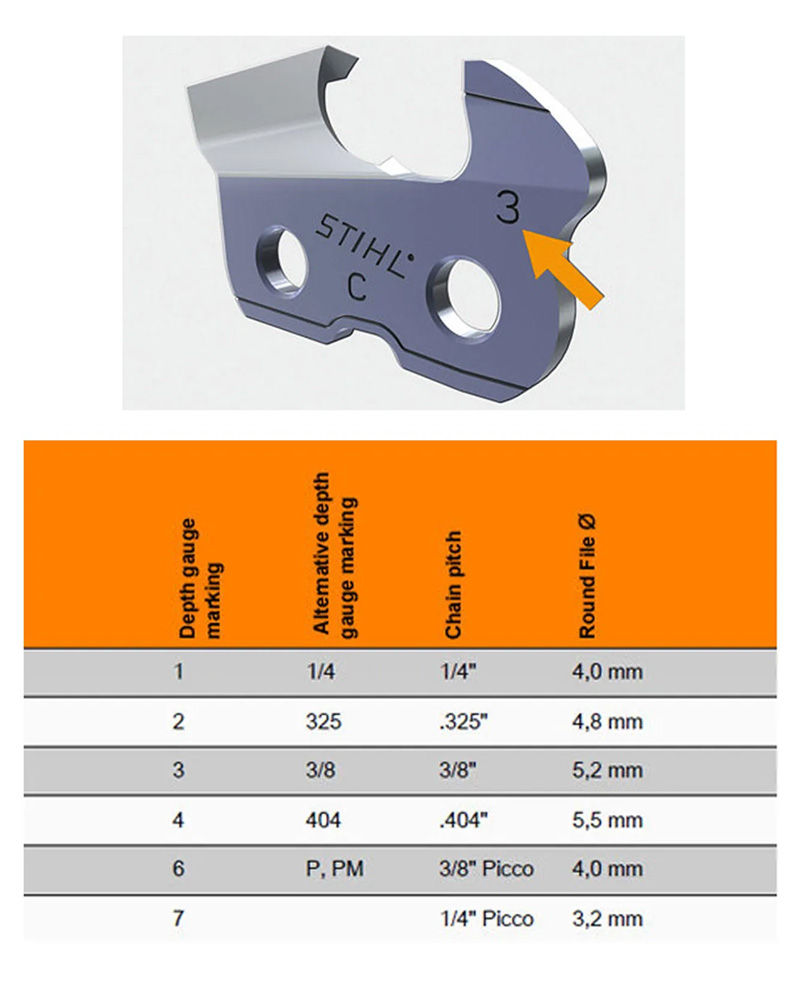
USING STIHL EASY 2-IN-1 FILE GUIDE
The STIHL Easyfile 2 In 1 File Guide is a great option for occasional Chainsaw users, who don't sharpen a chain on a regular basis. This tool simplifies the process of sharpening your saw chain by completing two functions at once – filing both the cutting edges of the teeth (i.e. the sharp bit!) and the depth gauge.
The video below shows you how to use the STIHL 2-in-1 File Guide.
USING A ROUND FILE
STIHL also make separate round files, flat files and file handles so you can have a mix and match selection to suit you! This might be a more cost-effective option if you have several chains with different pitches that need sharpening.
The video and steps below show you how to use a Round File to sharpen your Saw Chain.
STEP 1
-
-
Secure your Chainsaw in a vice and tension the chain.
-
Start with the side that is opposite you. Position the file so that the filing angle is 30°
-
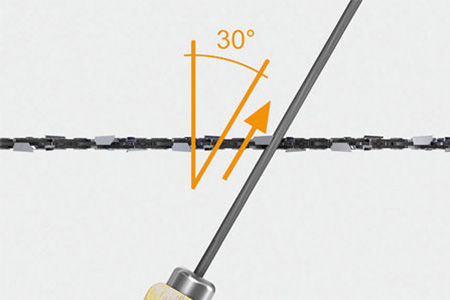

STEP 2
-
Always hold the file flat to the guide bar (right angle 90°)


STEP 3
-
Hold the file so that one quarter of its diameter projects above the top plate.
-
Use the full length of the file and apply pressure as you file away from the tooth – lift the file off the cutter on the backstroke.
-
Rotate the file a little at regular intervals while filing to avoid one-sided wear of the file.


STEP 4
-
2 or 3 strokes per tooth should be enough to restore a sharp edge
-
Once you have completed a full rotation of the chain, rotate the Chainsaw in the vice and repeat the same steps for the other side of the chain
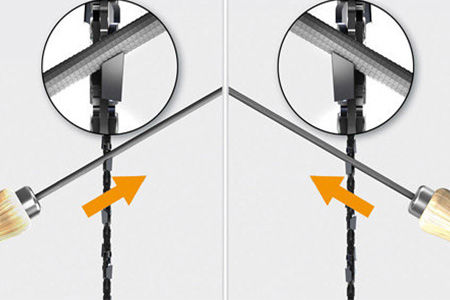

STEP 5
-
Check the depth gauge, simply place the filing gauge tool onto the saw chain. If the depth gauge protrudes above the top, it must be reworked. Use a flat file to file the depth gauge horizontally so that it is flush with the filing gauge tool.
DEPTH GAUGE
WHAT IS THE DEPTH GAUGE SETTING?
It’s really important to make sure the depth gauge is filed too, as it is the difference between the height of the cutting teeth and the depth gauge which determines how much wood is taken out by the chain. If you only file the cutting teeth down and don’t lower the depth gauge at the same time, your chain will be taking less and less wood out each time and your saw won’t perform as efficiently.
HOW TO CHECK THE DEPTH GAUGE
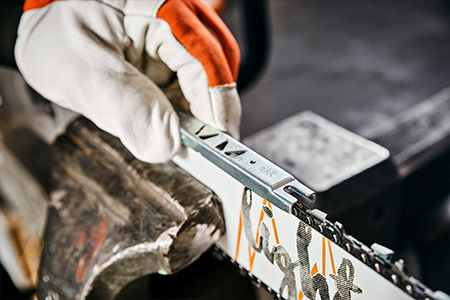

STIHL have a handy tool for checking the side and top plate cutting angle, tooth length and depth gauge setting, as well as for cleaning the groove and oil inlet hole in the guide bar. Choose the filing gauge tool that matches your chain pitch.
To check the depth gauge, simply place the tool on the saw chain. If the depth gauge protrudes beyond the gauge, it must be reworked. Use a flat file to file the depth gauge horizontally so that it is flush with the filing gauge.
HOW TO SHARPEN YOUR CHAINSAW: EXPERT TIPS AND TRICKS
-
Do not attempt to sharpen your Chainsaw with any files other than a Saw Chain file. Saw Chain files are specifically designed to sharpen Saw Chains. They have a special surface structure, known as a file stroke, that makes them the right tool to sharpen your Chains
-
Before you start sharpening, mark one cutter with a marker pen. After two or three strokes of the file, check how much material has been removed. If the surface looks uniform your filing action is correct. If there are still patches of colour in places, check that you are using the right file and make sure you are not holding the file too high or low
-
Marking your 1st tooth with a black marker it aslo a great way to remember where you started
-
Tensioning the chain will make it easier to file
-
Never continue working with a chain until it is completely blunt. A few strokes of the file at regular intervals quickly restores full sharpness
-
Count the number of file strokes and use the same number on each cutter to obtain cutters of identical length
-
If you find that the cutters in one row are shorter than those in the other row, you are likely to have used more pressure while filing the row concerned. Correct this by performing one or two strokes of the file on the longer cutters.
A NOTE ON SAFETY
Before working on your Chainsaw, ensure that the workspace is safe and your machine is secured in a vice.
We recommend using approved STIHL safety gloves when sharpening your saw to prevent injury. Always remember to cover your Chainsaw bar with its protective scabbard when not in use. This not only reduces the likelihood of accidentally cutting yourself, but also protects the teeth from sustaining damage and becoming blunt.


